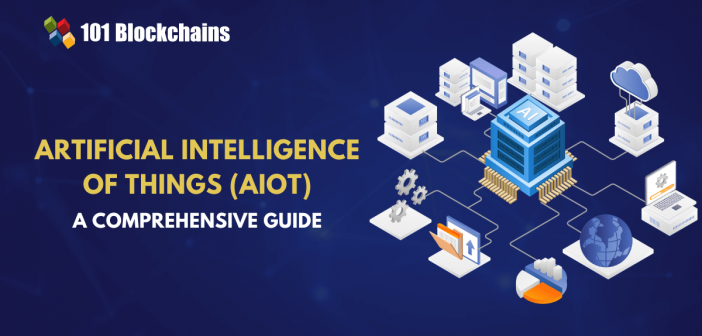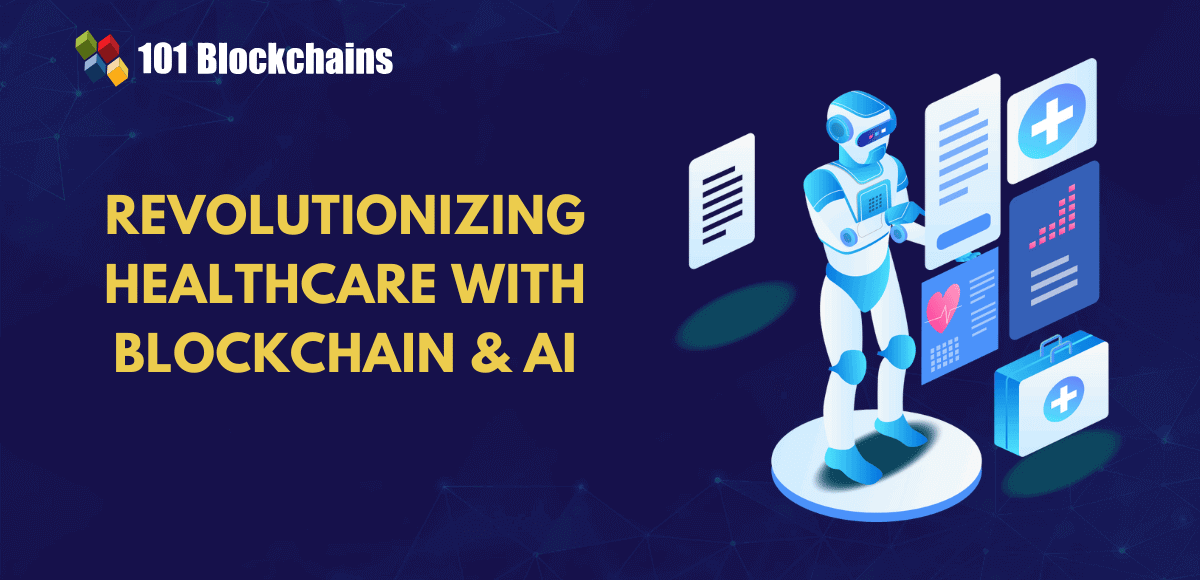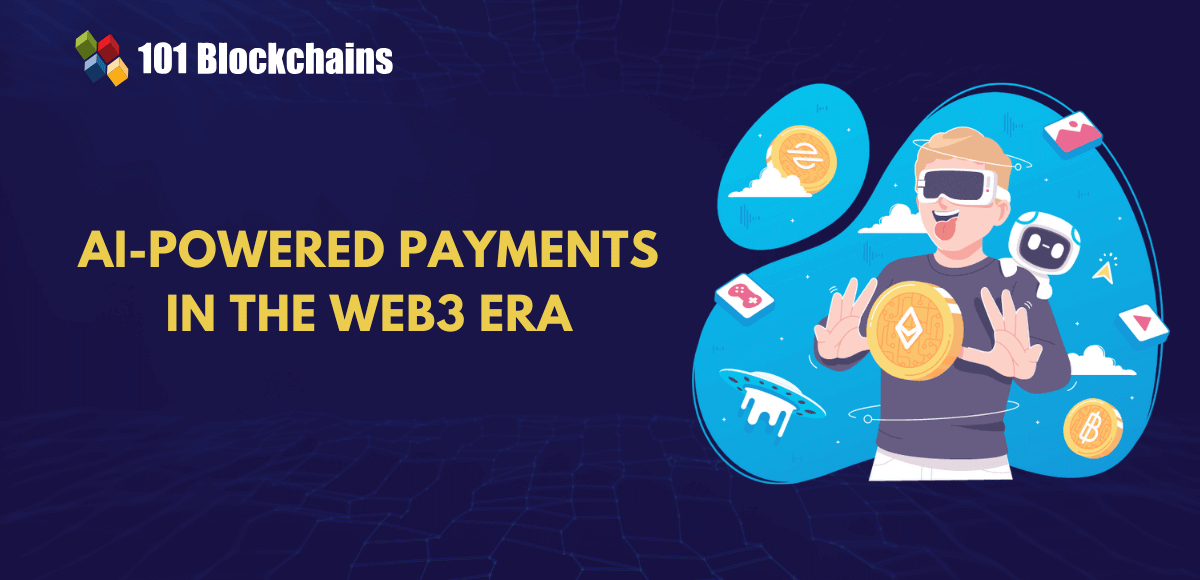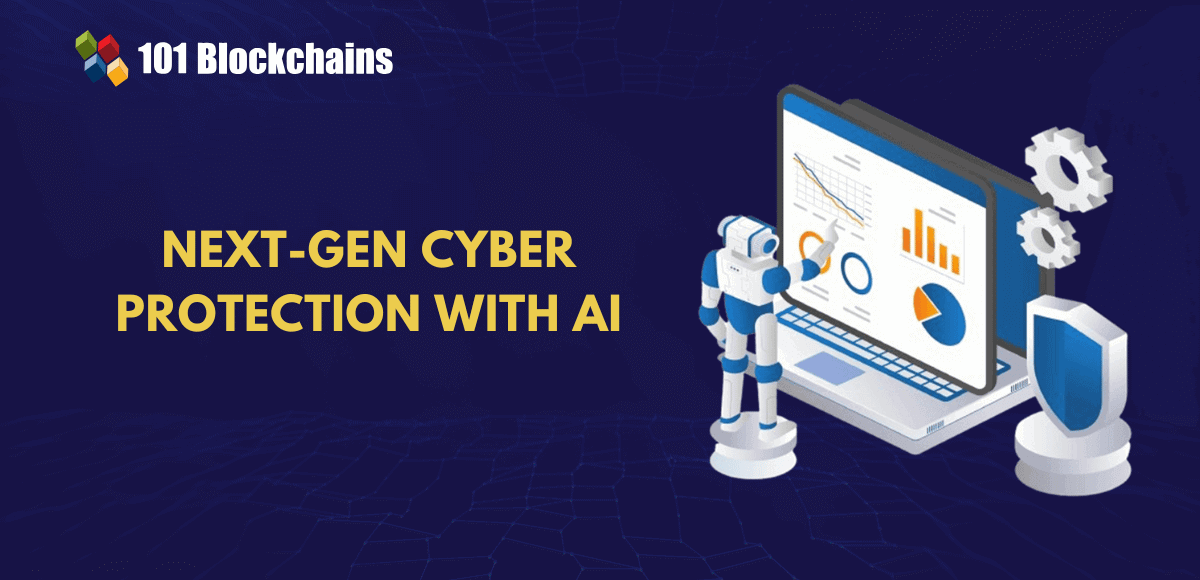Learn how blockchain truly works, master key definitions, and uncover what makes smart contracts so "smart." Dive into the fundamentals, gain valuable insights, and start your blockchain journey today!

- AI & ChatGPT
James Howell
- on June 05, 2024
A Deep Guide on Artificial Intelligence of Things (AIoT)?
Internet of Things or IoT refers to the network of interconnected devices and machines that can ensure data transmission without human intervention. Over the course of the last decade, IoT has led to significant changes in the approaches for business operations and personal tasks in people’s everyday lives. At the same time, AI has emerged as a formidable force for transformation in the domain of technology.
Therefore, discussions about artificial intelligence of things AIoT have been gaining momentum. The convergence of artificial intelligence and Internet of Things leads to the formation of AIoT. However, it is also important to note that people are likely to be curious about the ways in which AI and IoT can complement each other. Let us learn more about the working mechanism of AIoT and its benefits and applications in the real world.
Combining Two Powerful Technologies with AIoT
The best approach to understanding the significance of artificial intelligence of things involves unraveling its definition. You can find better explanations for queries like “What is the artificial intelligence of things?” by identifying the advantages of its integral components, AI and IoT. Artificial intelligence, or AI, is a crucial discipline in computer science that focuses on developing smart systems capable of simulating human intelligence.
AI can empower machines to perform tasks like humans, such as understanding, perception, and reasoning. Internet of Things or IoT refers to a network of connected devices or objects capable of real-time data collection and transfer through sensors or software.
With artificial intelligence of things, you can combine the powers of AI and IoT. As a result, AIoT can help in creating new systems that can leverage AI capabilities for processing the data collected and generated by IoT systems. The power of AIoT applications revolves around combining machine learning models with connectivity and data transfer features with IoT. By incorporating AI in IoT systems, the systems would no longer work only on collection and transfer of data. IoT systems can leverage the capabilities of AI for in-depth understanding and analysis of the data they collect and generate.
Want to understand the fundamentals of the Internet of Things (IoT)? Enroll now in the IoT Fundamentals Course!
Working Mechanism of Artificial Intelligence of Things
The next important aspect of any guide to artificial intelligence of things is the overview of its working mechanism. Most of the artificial intelligence of things examples prove that AIoT devices work by embedding AI in infrastructure components. The infrastructure components, including chipsets and programs, are connected to each other in IoT networks.
On top of that, AIoT systems utilize APIs to ensure seamless operation and communication between hardware, platform components, and software. Upon becoming operational, IoT devices would collect data, and AI would analyze the data to extract valuable insights. The workings of AIoT also draw attention to the two common approaches for setting up AIoT systems. Here is an overview of the two prominent implementations of AIoT systems.
-
Cloud-based AIoT
The first AIoT example that you must consider to understand the workings of artificial intelligence of things is cloud-based AIoT. Cloud-based IoT involves collection and processing of data from IoT devices through cloud computing platforms. It is important to connect IoT devices to the cloud as it serves as the ideal place for storing, processing, and accessing data for different applications and services.
The four important layers in cloud-based AIoT systems include device layer, connectivity layer, user communication layer, and cloud layer. With the device layer, you can find different types of hardware, such as beacons, cars, sensors, embedded devices, and tags. The infrastructure for artificial intelligence of things AIoT for cloud-based AIoT also includes the connectivity layer with fields and cloud gateways. It serves an important role in connecting cloud storage to controllers, intelligent devices, and sensors.
The cloud layer also plays a vital role in empowering cloud-based AIoT as it ensures data processing through components such as AI engine, data visualization, API data access, data storage, and analytics. On the other hand, the user communication layer primarily includes mobile applications and web portals.
-
Edge-based AIoT
Another popular implementation of AIoT systems that has gained attention of tech experts is edge-based AIoT. Your search for answers to “What is the artificial intelligence of things?” would also point you in the direction of edge-based AIoT for its special capabilities. Such types of AIoT implementations facilitate processing of IoT data at the edge or within proximity of the IoT devices. Therefore, edge-based AIoT systems require lower bandwidth for data transfers, thereby avoiding potential delays in data analysis.
Edge-based AIoT systems include three prominent layers: collection terminal layer, connectivity layer, and edge layer. Each layer in edge-based AIoT applications serves a distinct functionality. For example, the collection terminal layer includes all the hardware devices, such as cars, sensors, embedded devices, tags, and mobility devices. The hardware devices in this layer are connected to the gateway through existing power lines.
On top of it, the connectivity layer includes field gateways that are connected to the collection terminal layer across the existing power lines. Finally, the edge layer in edge-based AIoT systems offers the facilities for effective data storage, processing, and generation of insights.
Understand the actual potential of AI and the best practices for using AI tools with the AI For Business Course.
What are the Advantages of Combining AI and IoT?
A closer look at the artificial intelligence of things examples reveals that you can make the most of the best features of AI and IoT with AIoT systems. It is important to understand the different ways in which artificial intelligence and IoT can work together. Some of you may have doubts regarding the possibility of AI and IoT working together when they are distinct technologies. AI and IoT have been making significant technical developments and serving as valuable tools for technological development across different industries.
The combination of AI and IoT ensures that IoT devices can expand their utility beyond collecting and delivering data. IoT devices would develop the capabilities for better understanding and evaluation of data. Businesses, economies, and industries all over the world must take note of the advantages of AIoT.
-
Improved Operational Efficiency
AIoT can help businesses achieve better operational efficiency. The combination of AI and IoT can help generate operational insights at a faster pace, thereby ensuring faster detection and resolution of problems. As a result, AIoT systems can also play a major role in improving operational efficiency for industrial automation tasks. For example, AIoT applications with cameras can help in quality control for industrial automation. On top of it, AIoT also ensures effective tracking and compliance with specific regulations and guidelines.
-
Reduction of Operational Costs
AIoT devices can also have a significant influence on the reduction of operational costs. Smart systems with the power of AI and IoT can ensure efficient use of resources. For example, smart building applications can help in adjustment of temperature and light controls according to occupancy.
Therefore, AIoT systems can play a vital role in improving machinery analysis and preventive maintenance in factors. Sensors and cameras can monitor machine parts and identify the ideal time to introduce improvements or implement maintenance schedules.
-
Easier Risk Management
Businesses across different industries have to struggle with risk management problems. Intelligent, distributed systems based on AIoT can predict future risks alongside suggesting preventive measures for the future. The best AIoT example for risk management points to crowd analysis in public places.
AIoT systems can also support comprehensive analysis of water levels and employee safety analysis according to desired goals. Organizations can use AIoT to stay one step ahead in the preparations and management of potential risks in future. For example, insurance companies have been leveraging AIoT applications to collect data from machines and factors for effective management of insurance risks.
-
Flexible Real-time Monitoring
AIoT can also help businesses with easier real-time monitoring of systems, which can help save time and avoid business downtime. The consistent monitoring of different systems with AIoT helps in easier detection of anomalies and making predictions or decisions for the same.
Most important of all, artificial intelligence of things or AIoT can achieve consistent real-time monitoring without any human intervention. As a result, it can achieve faster results. One of the notable examples of benefits of real-time monitoring with AIoT systems is the use of cameras for remote detection of leakages.
What are the Top Applications of AIoT?
Artificial intelligence of things can mark the beginning of a new revolution in the field of technology. The answers to “What is the artificial intelligence of things?” would draw attention toward the use of cognitive abilities with consumer appliances. However, you can also find a broader range of applications for AIoT with possibilities for creating a seamless technological landscape. Here are some of the most prominent applications of AIoT that can give a new definition to the capabilities of AI and IoT.
-
Smart Revolution
Starting from smart cities to smart homes and offices, AIoT can have a major influence on the world we are likely to witness in the future. The prominent artificial intelligence of things examples would point out how sensors can collect data to improve quality of life operational efficiency and guarantee cost-effective improvements. Smart retail stores can use AIoT to recognize shoppers’ faces with a camera and determine whether shoppers have scanned items at self-checkout before they leave the store.
-
Video Surveillance
With cameras being one of the widely available IoT devices, it is important to understand that AIoT use cases would be incomplete without video surveillance. Video surveillance with AIoT applications would capitalize on the power of AI and IoT for smarter video surveillance and security. AIoT uses machine learning algorithms for real-time analysis of data from video feeds of cameras, thereby detecting objects and recognizing people automatically.
-
Manufacturing
Another notable area where artificial intelligence of things would have a formidable impact on technology is manufacturing. AIoT systems can empower Industrial Internet of Things to achieve better real-time monitoring of machinery and effective detection of defective parts.
You may come across conventional machine vision systems that offer quality control and fall back in terms of efficiency. However, AIoT can address the setbacks by providing the power of deep neural networks. As a result, AIoT systems can use deep neural networks for real-time detection of defective parts through comprehensive analysis of real-time video feeds.
Identify new ways to leverage the full potential of generative AI in business use cases and become an expert in generative AI technologies with Generative AI Skill Path
Final Words
The overview of artificial intelligence of things AIoT showcases the reasons why it deserves to be one of the top trends in the domain of technology. Artificial intelligence and Internet of Things are the two most powerful technologies that have had distinct effects on various industries. At the same time, it is also important to consider the possibilities of blending AI and IoT to create AIoT.
With the power of AI, IoT systems would become capable of processing and analyzing the data collected and generated by IoT devices. Interestingly, the proven success of different examples of AIoT in the real world proves that there is a bright future for AIoT. Refine your knowledge of AIoT with an in-depth understanding of AI and IoT fundamentals right now.







